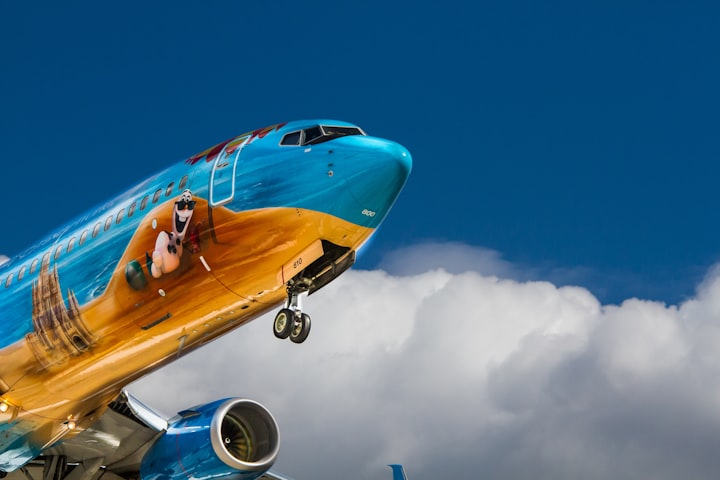10 Things You Should Learn About Fighter Aircraft or Commercial Aircraft Flight Control Systems!
Aircraft Systems are generally divided into 10 main items. These are respectively; flight control systems, landing gear, hydraulic systems, aircraft electrical system, engine discharge air system, avionics, environmental control systems, fuel systems, propulsion systems and ice protection systems.

Aircraft Systems are generally divided into 10 main items. These are respectively; flight control systems, landing gear, hydraulic systems, aircraft electrical system, engine discharge air system, avionics, environmental control systems, fuel systems, propulsion systems and ice protection systems.
Pilots need to know how to fly the plane before they take their first flight. There are many types of training programs offered by schools and airlines.
A flight crew consists of a pilot and co-pilot. Both have different responsibilities. The pilot is usually seated at the left side of the cockpit and controls the throttle and rudder pedals. He/she is responsible for flying the plane and landing it safely. The co-pilot is usually seated at the right side of the cockpit and monitors the instruments. He/she is also responsible for keeping the plane level and making sure that the pilot knows what is going on.
1. Flight control systems
Flight Control Systems (FCS) are used to regulate the speed and direction of aircrafts. They consist of three major components: flight management computer, autopilot system, and navigation system. These systems work together to provide stable flight conditions and ensure that the pilot can safely land the plane.
Autopilots are designed to automatically maintain the desired course of the aircraft while the pilot is engaged in other tasks. This type of system has been around since the early days of aviation.
Navigation systems are used to determine the position of the aircraft. They use radio signals from ground-based stations to calculate the aircraft's location.
Flight Management Computers (FMC) are responsible for monitoring the performance of the autopilot and navigation systems. FMCs are also used to monitor the status of the aircraft and alert pilots if any problems arise.
2. Landing gear
Landing Gear is the name given to the structure that holds your aircraft down while it's parked at the airport. This structure is usually located under the wings of the plane and has two main purposes. First, it helps keep the plane from tipping over if it were to take off without being properly secured. Second, it allows the pilot to safely get out of the plane if they need to leave the cockpit.
The landing gear consists of three parts - the wheels, the struts, and the legs. The wheels are what actually touch the ground. They're attached to the bottom of the fuselage and allow the plane to move forward. The struts connect the wheel to the rest of the landing gear. These help to stabilize the plane and prevent it from moving too much. Finally, the legs are what hold the landing gear up. There are four of these on each side of the plane.
3. Hydraulic systems
Flight hydraulic systems are used to control the pressure of air inside the aircraft's wings. These systems consist of two components; a pump that moves pressurized fluid through pipes, called hoses, and valves that regulate the flow of this fluid. This system allows the pilot to adjust the amount of lift generated by each wing.
The airflow control system consists of three major parts; the pitot tube, static ports, and the differential pressure sensor. The pitot tube measures the speed of the incoming air at different points along the fuselage. Static ports measure the total volume of air passing through the plane. Finally, the differential pressure sensor determines how much pressure is being exerted on both sides of the fuselage.
A pitot tube is a device used to measure the velocity of air moving past it. A pitot tube is attached to an instrument panel and is located near the leading edge of the wing. The pitot tube contains a small hole that is covered by a thin membrane. When the wind hits the membrane, it causes it to deflect inward. As the deflection increases, the pressure of the air pushing against the membrane increases. This increase in pressure can then be measured using a gauge.
4. Aircraft Electrical Systems
Aircraft Electrical Systems (AES) are the electrical circuits that power the aircraft's onboard systems. They consist of many different types of components, including but not limited to:
- Power distribution units (PDU)
- Circuit breakers
- Switches
- Fuses
- Relays
- Signal generators
- Voltage regulators
- Current transformers
- Transformers
- Transducers
- Indicators
- Controllers
- Displays
- Sensors
- Actuators
- Motors
- Generators
- Pumps
- Fans
- Heaters
- Cooling fans
- Lighting fixtures
- Air conditioning
- Radios
- Speakers
- Audio/video equipment
- Computers
- Other electronic devices
5. Engine bleed air system
Engine bleed air system (EBA) is used to provide compressed air to various systems on aircrafts. This air is taken from the engine compressor section and is then routed through the EBA system before being supplied to the cabin pressurization system.
6. Avionics
Avionics is the science of aircraft flight control systems. These systems are used to control the aircraft's attitude (direction) and airspeed. They can be broken down into two major categories: primary flight controls and secondary flight controls. Primary flight controls include the rudder pedals, elevators, ailerons, and throttle. Secondary flight controls include the autopilot, trim system, and landing gear.
7. Environmental Control Systems
Aircraft Environmental Control Systems (ECS) are used to regulate temperature, humidity, air quality, and pressure inside the cabin of an airplane. They consist of two major components: the HVAC system, which provides conditioned air throughout the plane; and the Oxygen Generation System, which produces oxygen from ambient air using fuel cells.
8. Aircraft Fuel Systems
Aircraft Fuel Systems are used to store and distribute fuel throughout the aircraft. They consist of tanks, pumps, valves, filters, and other components that work together to move fuel from its storage location to where it needs to go.
A fuel system consists of two types of components: the tank and the pump. The tank holds the fuel and the pump moves it around.
There are three basic types of tanks: gravity-fed, pressure-fed, and hybrid-fed. Gravity-fed tanks rely on the force of gravity to deliver fuel to the engine. Pressure-fed tanks use pressurized air to push fuel through the lines to the engines. Hybrid-fed tanks have both gravity and pressurized air to provide fuel to the engines.
Tanks come in different sizes and shapes depending on how much fuel they can hold. Some tanks are cylindrical while others are rectangular. Rectangular tanks are usually preferred over cylindrical ones due to their ability to fit into smaller spaces.
Filters remove impurities from the fuel before it enters the engine. Filters are either mechanical or electrostatic. Mechanical filters are designed to catch particles using a mesh screen. Electrostatic filters use electricity to attract and trap contaminants.
Valves control the flow of fuel between tanks. There are many different types of valves including ball valves, butterfly valves, check valves, globe valves, gate valves, needle valves, plug valves, poppet valves, rotary valves, slide valves, stopcocks, and spool valves. Each type has its own advantages and disadvantages.
9. Propulsion systems
Aircraft propulsion systems are used to generate thrust from the engine. This thrust is then transferred through the airframe into forward motion.
There are two types of aircraft propulsion systems: jet engines and rocket engines.
Jet engines use high-pressure air that has been heated to extremely high temperatures. This hot air is forced out of the back of the engine at speeds of over 1,000 miles per hour. As this air rushes past the turbine, it turns the blades like a propeller does, creating thrust.
Rocket engines work much differently than jet engines. They produce their own fuel supply and burn it in a controlled way.
The first rocket engine was invented by Robert Goddard in 1926. He called his invention a liquid-fueled rocket engine.
Liquid-fueled rockets are still used today. Most modern rockets use them.
10. Ice protection systems
Aircraft ice protection systems are used to protect aircraft from icing conditions. They consist of two parts; the first is the de-icing system that removes water from the wings and fuselage of an aircraft. The second is the anti-ice system that prevents ice build-up on critical surfaces such as the wing leading edges, horizontal stabilizer, vertical fin, rudder and elevators.
About the Creator
Writer Tiger
I write articles on Psychology, Technology, Blockchain and information. Most of my time is spent researching and getting the right information.






Comments
There are no comments for this story
Be the first to respond and start the conversation.